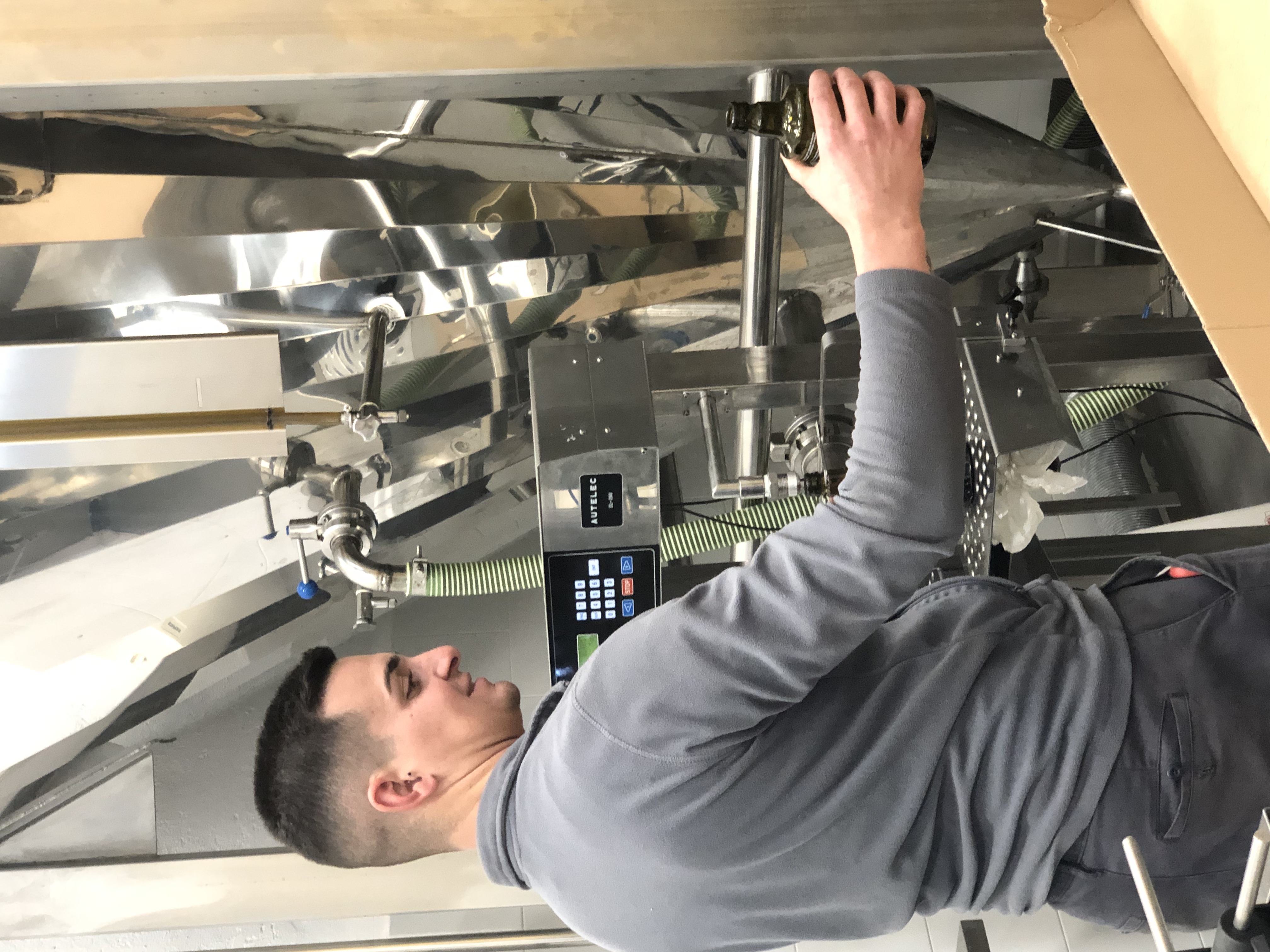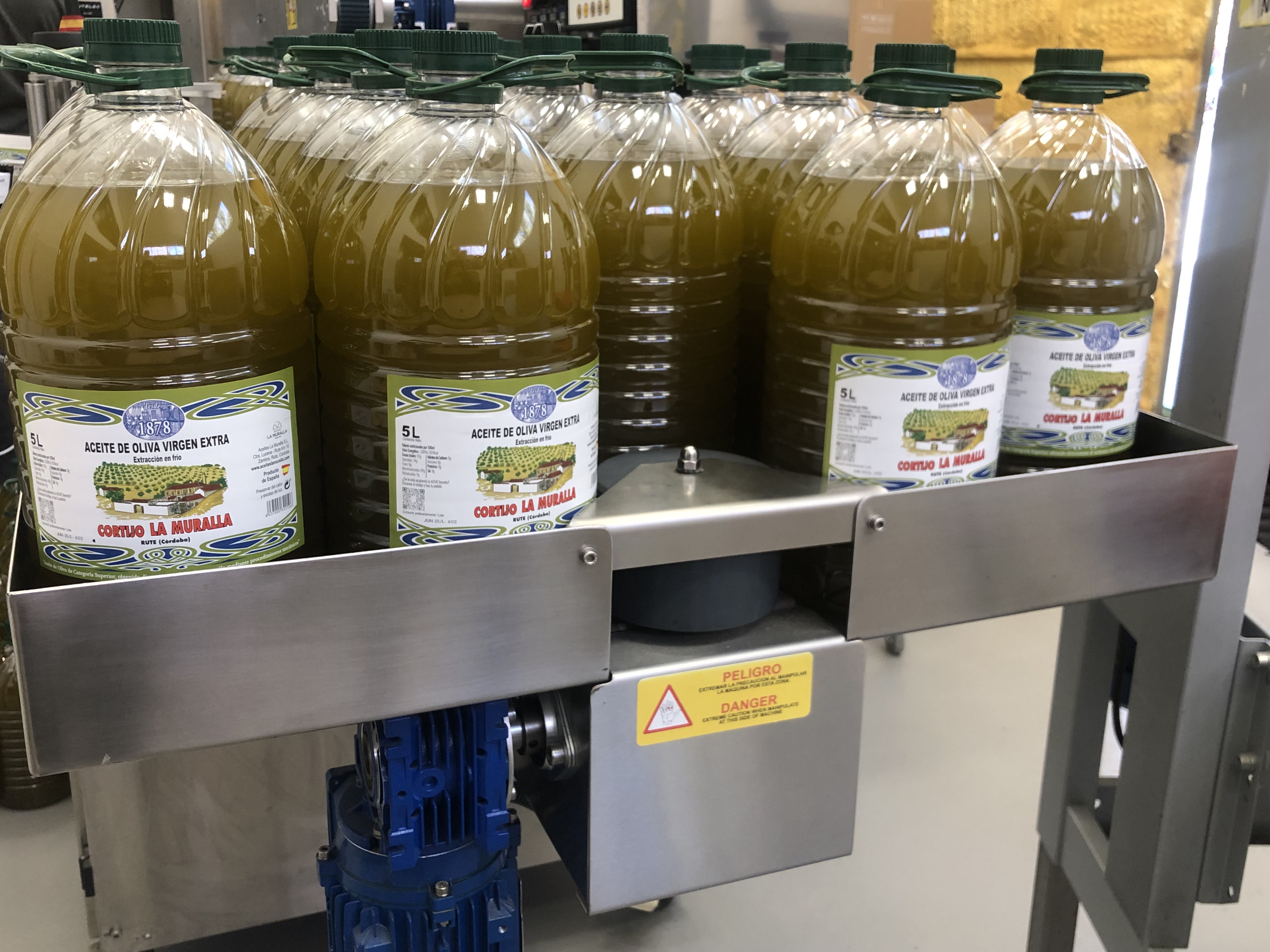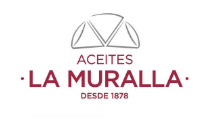
How the quality of bottling affects the quality of extra virgin olive oil
The bottling of extra virgin olive oil is a crucial step in the production chain that directly affects the quality and preservation of the final product. Cortijo La Muralla, as a producer of extra virgin olive oil, probably pays special attention to this process for several reasons:
Quality Preservation: Correct bottling helps to preserve the organoleptic characteristics of extra virgin olive oil. This includes its flavour, aroma, texture and colour. Contact with oxygen, light and heat can negatively affect these qualities, so bottling should be done in a way that minimises exposure to these elements.
Protection against oxidation: Extra virgin olive oil is vulnerable to oxidation, which can alter its flavour and reduce its health benefits. Bottling should be carried out under conditions that minimise exposure to oxygen, using appropriate containers and seals.
Protection against light:
Exposure to light can break down the compounds in olive oil, diminishing its quality. Therefore, bottles should be opaque or protected from light to preserve the quality of the product.
Food Safety:
Correct bottling is also essential to ensure the food safety of the product. Bottles must be clean and sterilised, and the bottling process must meet sanitary standards to avoid contamination.
Consumer information:
The label on the bottle is the main source of information for the consumer. It must be clear and accurate, providing details on the origin of the oil, its bottling date, and any other relevant information. Compliance with Regulations and Certifications: Aceites La Muralla oils are subject to various regulations and certifications related to the production and marketing of extra virgin olive oil. Correct bottling is essential to comply with these standards and guarantee the quality of the product.


Relevant information on the labeling of extra virgin olive oil
The information that appears on a bottling label may vary depending on the type of product, but generally, there are certain key elements that are important and essential to consumers. Here are some of the most important pieces of information:
Product name:
Clearly identifies the product. In the case of olive oils, this could include the type of oil (extra virgin, virgin, etc.) and, in your case, the specific name "PH5 by Cortijo La Muralla brand".
Origin and Variety:
Indicate where the product comes from and, in the case of olive oils, the olive variety used. Grade of quality (in the case of olive oils): In the case of olive oils, the grade of quality is crucial. For example, "Extra Virgin" is the highest grade and is obtained by cold mechanical methods. Net content: Indicates the quantity of product inside the container. It can be expressed in volume (liters, milliliters) or weight (grams, kilograms).
Nutritional information:
Provides details on nutritional values, such as calories, fat, saturated fat, cholesterol, sodium, carbohydrates, protein, etc. Expiration date or packing date: Indicates when the product was packaged or when it expires. This is especially important for perishable products.
Storage instructions: Provides recommendations on how to store the product to ensure freshness and quality.
Manufacturer or distributor information: Includes the name and address of the manufacturer or distributor. This is useful in case of questions, problems or for further information. Allergens: If the product contains ingredients that are allergenic, there should be a clear statement on the label. Barcode: Facilitates the process of scanning the product at the cash register and may contain production lot information. It is important to read the entire label to fully understand what you are buying and to make sure it meets your dietary needs and preferences.

Doubts about the best-before date for extra virgin olive oil
Extra virgin olive oil does not have a "expiration date" date as such, but has a "best before" date. Expiration date and best-before date are terms often used for food products, including extra virgin olive oil, to indicate the freshness and quality of the product.
However, there are important differences between the two:
Expiration date:
The best-before date is most common on perishable products and indicates the latest date until which the product is expected to be safe for consumption. After the expiration date, the manufacturer does not guarantee the safety of the product and it is recommended not to consume it. This term is used with products that have a more limited shelf life and could pose health risks after that date.
Best before date: The best-before date, also known as expiration date or date of minimum quality, is the date until which the manufacturer guarantees the optimal quality of the product. After this date, the product may still be safe to eat, but its flavor, texture and nutrients may have diminished. The best-before date is more common for non-perishable products or products with a longer shelf life, such as extra virgin olive oil.
In the specific case of extra virgin olive oil: Expiration Date: Being a product with a long shelf life and not usually representing health risks after its best-before date, extra virgin olive oil usually has a best-before date. This applies to our Aceites La Muralla products. Best before date: Indicates until what date the extra virgin olive oil is expected to maintain its optimum quality in terms of flavor, aroma and nutrients. After this date, the oil may still be safe to consume, but it is possible that it has undergone changes in its organoleptic properties. It is essential to follow the manufacturer's instructions and store olive oil correctly to ensure its freshness and quality until the best-before date indicated on the package. The best-before date or expiration date of an extra virgin olive oil is established from the date of bottling, not from the date the oil was obtained or harvested. This is because the bottling process is crucial to maintain the freshness and quality of the oil. Extra virgin olive oil is a product that tends to retain its organoleptic and nutritional properties for a relatively long period if stored properly. However, proper packaging is essential to protect it from oxidation and degradation.
It is important that consumers store olive oil in a cool, dark place, away from excessive light and heat, to preserve its quality. In addition, it is essential to follow the manufacturer's recommendations for best before date to ensure that the oil is used at its best.
In summary, the best-before date for an extra virgin olive oil usually depends on the packaging and how it has been stored since then. Whether it comes from the 2022-23 or 2023-24 harvest may not have a significant impact on the best-before date if both were packaged and stored in a similar manner.

